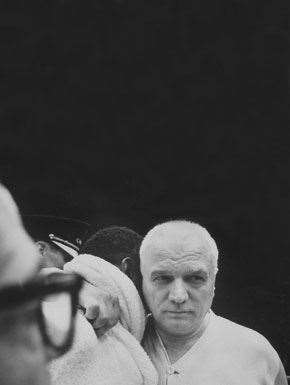The legendary trainer didn’t just teach boxers like Floyd Patterson and Mike Tyson to throw punches
The legendary trainer didn’t just teach boxers like Floyd Patterson and Mike Tyson to throw punches,
 The coach embraces his first world heavyweight champion, Floyd Patterson
The coach embraces his first world heavyweight champion, Floyd PattersonImage: Getty Image
Two of the most fearful men in history’s fascinating pageant of heavyweight champions were Floyd Patterson and Mike Tyson. You read correctly: fearful, not fearsome. It’s no coincidence both were trained by Cus D’Amato. This is debatable, but it’s unlikely they would have beaten the men they did had they been trained by anyone else.
You see, Cus, like T.S. Eliot’s Webster, was much possessed by death. He saw the skull beneath the skin. It may be because his mother and three of his brothers (one of whom was murdered in front of him) died young. He saw his preoccupation not as a morbid fixation, but a psychological advantage, a gift, and he felt the need to imbue his fighters with it as soon as he saw they were serious. To embrace the possibility of death, to accept it as the flip
side of life, is the key to psychological health. It was also the key, according to Cus, to a great fighter.
As a result, his boxers knew their inner man better than any in the history of the sport. Constantine D’Amato trained three world champions who also turned out to be three of the most articulate when it came to boxing. Jose Torres wrote the intriguing Sting Like A Bee, about the first Ali-Frazier fight; Tyson was often eloquent about the science of hurting a man, and his self-assessments remain squirmingly candid. Patterson, a journo’s dream, was given to making painfully incisive comments about the reasons men box and the reasons we watch.
Cus always believed, and wanted others to believe, that a man’s spirit was the superior of his flesh. As a 16-year-old he went four days without food to prove no man could threaten him with starvation. His life was studded with such actions, and his unconquerable will led him to stand up to the corrupt International Boxing Club, controlled by the Mob, firstly by openly defying their monopoly, then by getting under their radars, then winning a world title with a self-doubting kid named Floyd Patterson. Cus had already lost an early student, Rocky Graziano, to them, and refused to let them own Patterson by agreeing to fight “their” contenders.
A fearless act as a child took his life down an unexpected path. Accompanying his brother to a boxing gym, Cus expected to become a pro himself. But on one of those days, Cus, who was 12, took on an adult man, a bully who’d made the mistake of trying to cow him into submission. As a result, Cus lost the sight in his left eye.
During his time at the Bronx’s Gramercy gym (which he later sold for one dollar!), and later at the Catskill boxing club, D’Amato trained anyone who walked through his doors for free, and fed and housed many more. Boxing trainers traditionally enjoined their fighters to reject fear; to reject, in short, their humanity. D’Amato showed his charges how to respect it; to see and acknowledge their own doubts, and to reduce boxing to two alternatives: run away or turn your fear against its very cause. “The hero and the coward feel the same thing.”
The style D’Amato developed for his boxers – derisively dubbed “peek-a-boo” by the IBC ‒ was based on his psychology. His boxers kept their hands high, their heads mobile, breaching the space between them and their opponents without being hit. Their incessant movement, the fast combinations they developed using Cus’ “number system” (based on the “plays” that characterise gridiron, basketball and baseball), and their ability to break an opponent’s lines of defence, caused many a big man to become dispirited – and fearful.
After Patterson lost his world title to Sonny Liston in 1963, Cus lived in relative obscurity as a “historical figure” – a man who might have trained 20 world champions had he taken the money. Then, a troubled street kid came to his gym and, after one wild, clumsy spar, Cus declared the man he’d been waiting for had come. Tyson stood under six feet tall but his punch was an overwhelming force. He was built for Cus’ fighting system. The legendary Cus was back!
Actually, Cus had been preparing to die. “I’m an old man, but if there’s anything I live for it’s this kid. He’s put some life back in me and I just hope I live long enough to see him become the heavyweight champion.” He fell short by one lousy year.As Cus lay seriously ill in hospital, the distraught Tyson told Bill Gallo, “Cus used to sit with me for hours talking like a philosopher about boxing and life. It’s Cus’ style to boil everything down and give you a reason for everything. What he tells you about, how to conquer fear and things like that, are mind-boggling.”Cus died in November 1985, after collapsing at a boxing convention. In November 1986, Tyson became heavyweight champion. But the records show he was poorer for the need of Cus. So was the world that judged him.
– Robert Drane
Related Articles

Feature Story: Moving the Needle

The Aussies at The Open













